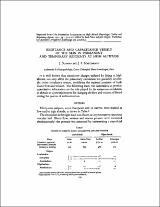Mostrar el registro sencillo del ítem
Resistance and capacitance vessels of the skin in permanent and temporary residents at high altitude
| dc.contributor.author | Durand, J | |
| dc.contributor.author | Martineaud, JP | |
| dc.date.accessioned | 2019-10-23T18:45:24Z | |
| dc.date.available | 2019-10-23T18:45:24Z | |
| dc.date.issued | 1971 | |
| dc.identifier.uri | http://repositorio.umsa.bo/xmlui/handle/123456789/23164 | |
| dc.description.abstract | Summary. Blood flow, pressure and volume have been measured in the right hand as a representative cutaneous vascular bed. Measurements have been made at sea level and at high altitude on residents and newcomers. Blood flow is lower at high altitude than at sea level in both highlanders and lowlanders. The reduction in flow is detectable immediately on arrival at altitude. However, after one month, sojourners still have a larger blood flow than highlanders. Correction of hypocapnia by breathing an appropriate mixture of CO₂ does not alter the cutaneous blood flow in natives but partially corrects that of lowlanders. | es_ES |
| dc.language.iso | en | es_ES |
| dc.publisher | Centre National de la Recherche Scientifique | es_ES |
| dc.subject | CAMBIOS CIRCULATORIOS | es_ES |
| dc.subject | FLUJO DE SANGRE | es_ES |
| dc.subject | ACLIMATACIÓN | es_ES |
| dc.subject | AMERICANOS | es_ES |
| dc.title | Resistance and capacitance vessels of the skin in permanent and temporary residents at high altitude | es_ES |
| dc.type | Article | es_ES |

